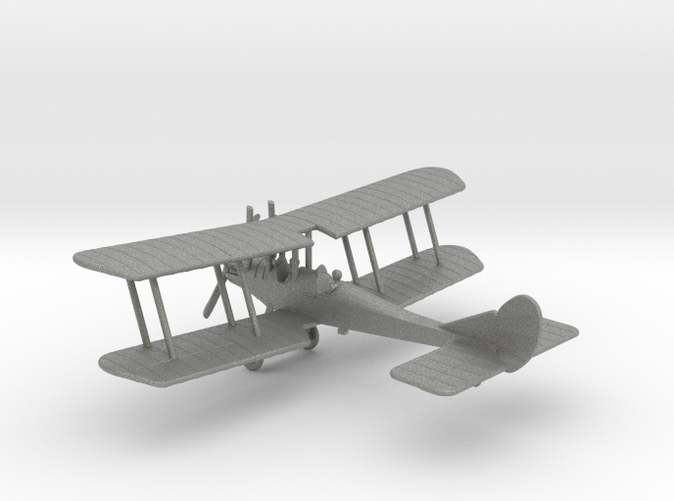Adding stagger to the wings to improve the downward vision for the front-seated observer, double-ailerons to the wings, a fin in front of the rudder improved the B.E. type in the
R.A.F. B.E.2c. That it was a stable, easy-to-fly machine made it an excellent choice for 1914 reconnaissance, though that same stability would become a detriment in 1915. Though the first machines reached squadrons in late 1914, the ramp up was slow and in March there were only thirteen in the field. While early machines used the same 70hp Renault as its predecessors, the BE.2c soon converted to a new custom engine, the R.A.F. 1a, and the skid undercarriage gave way to a simple Vee.
By mid-1915, Fokker monoplanes were starting to take a toll on the stable BE's. Aircrew devised way to give the plane some armament for defense, but the lack of a synchronizer and the front-seated observer (in a forest of struts) made such efforts provide very limited success. In addition to reconnaissance, the BE.2c sometimes carried a small bomb load, but the observer had to be left behind because the plane could not lift both.
BE.2c's were used by both the RFC and RNAS in almost all theatres as well as Home Defense, where it managed to take down five German airships.
A small number of BE2c's were supplied to Belgium in 1916, where they sensibly swapped the observer to the rear and supplied him a Lewis gun on an Etévé mount, added a forward-firing Vickers, and used the 150hp Hispano-Suiza engine.
This version shows the BE2c with a early-model triangular fin and it is unarmed. Also available is a
BE2c with the later, rounded fin and an observer's machine gun.
This plane comes in both 1:144 and 1:285/6mm/1:288 scales.
The 1:285 product contains two airplanes joined by disposable links, one with the early fin and one with the late fin. In Frosted Detail, the planes include propeller disks, which you can retain or snap off and discard to your preference.
DESIGNER NOTE:
Models at scales smaller than 1:288 may no longer be available. Shapeways discontinued the material for which they were designed, and the newer materials require that each and every model be adjusted to thicken surfaces like wings. If you are interested in a particular model in a small scale, please let me know and I will prioritize it higher in the queue.
For more details and gaming information, see
https://linen.miraheze.org/wiki/R.A.F._B.E.2c.
